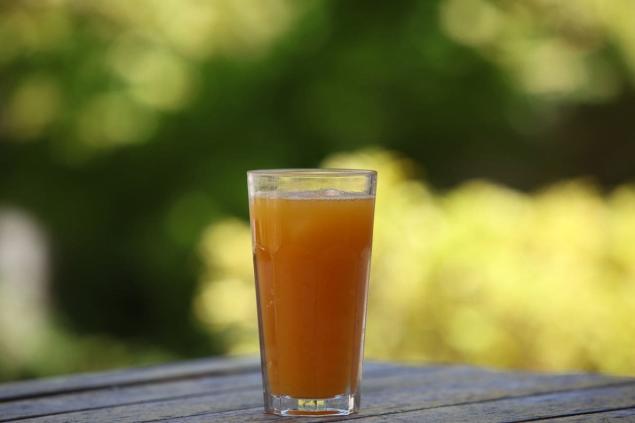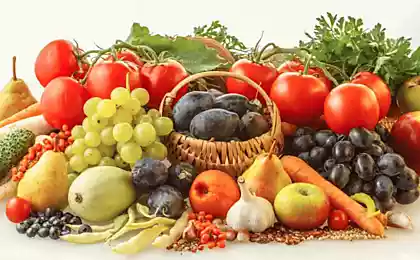171
Is it true that Soviet juices were as natural and tasty as they say?
Taste of childhood and youth. Who doesn’t remember these delicious, natural ones? Soviet juice. It seemed that they took an apple or a pear, squeezed it out - and immediately into a glass. So natural and fragrant was this nectar. And every resident of a huge country with confidence could say that he drinks the most natural and healthy juices in the world. But was that really the case? The editors will try to understand this today. "Site".

The agro-industrial complex of the USSR really amazed. Especially in the early 80s, when it seemed that all the unrest was behind, and only a bright future ahead. On the fields of the republics, everyone harvested, from schoolchildren to workers in various industries. The abundance of vegetables, fruits and berries was spinning. And, of course, all this was processed into juices, purees and various preservation. The policy of the Soviet Union was that wherever you worked, you should contribute to public life. After the fields, everyone worked together at the processing plants.

And if with fruit and vegetable juices even more or less everything was clear, then the most dubious juice was birch. Statistics of the USSR claimed that every citizen of the country drinks about 5 liters of this juice per year. According to simple calculations, it can be determined that birch plantations should have been up to 8 million. After all, one tree per season emits about 180 liters, and to provide all citizens, it took up to 1.5 billion liters of juice per year.

What is more remarkable: in the USSR there were GOSTs for everything, except birch juice. There was a separate standard that regulated the storage of nectar before transfer to the production plant. And then the plant already made juice, where the nectar was diluted with water, added sugar, citric acid and rolled into cans. And now the citizens of the country drink almost natural and almost useful birch juice.

It should be noted that this technology of production of juice was both apple and any other. For one simple reason: the shelf life of natural nectar is too short, and juices were sold fresh all year round. So they underwent heat treatment with the addition of preservatives to prolong the life of the natural product. In any case, these juices were much more useful than modern ones. Still, the technology at least somehow, but followed, and conscience sometimes did not allow to make a very bad product.

The most natural Soviet juice was considered tomato. I couldn't dilute it too much. It should be full of thick, thick and rich colors. And with the cultivation of tomatoes, there were almost no problems - the harvest was always there. Tomato juice was considered a favorite delicacy of all residents of the country. Both children and adults drank it. It could be bought both ready-made in banks and on a spill in large barrels. The housewives certainly stockpiled tomato juice for the whole family.

Everyone who lived in that large country remembers that you could buy natural juice in any deli. On a hot summer day, drink a glass of cool juice. In winter, buy a bottle for the whole family. Natural juices are a storehouse of vitamins that are so necessary for every person. And the kids got less sick and the adults worked better. Do you remember the taste of those natural Soviet juices? Write in the comments what juice was your favorite.

The agro-industrial complex of the USSR really amazed. Especially in the early 80s, when it seemed that all the unrest was behind, and only a bright future ahead. On the fields of the republics, everyone harvested, from schoolchildren to workers in various industries. The abundance of vegetables, fruits and berries was spinning. And, of course, all this was processed into juices, purees and various preservation. The policy of the Soviet Union was that wherever you worked, you should contribute to public life. After the fields, everyone worked together at the processing plants.

And if with fruit and vegetable juices even more or less everything was clear, then the most dubious juice was birch. Statistics of the USSR claimed that every citizen of the country drinks about 5 liters of this juice per year. According to simple calculations, it can be determined that birch plantations should have been up to 8 million. After all, one tree per season emits about 180 liters, and to provide all citizens, it took up to 1.5 billion liters of juice per year.

What is more remarkable: in the USSR there were GOSTs for everything, except birch juice. There was a separate standard that regulated the storage of nectar before transfer to the production plant. And then the plant already made juice, where the nectar was diluted with water, added sugar, citric acid and rolled into cans. And now the citizens of the country drink almost natural and almost useful birch juice.

It should be noted that this technology of production of juice was both apple and any other. For one simple reason: the shelf life of natural nectar is too short, and juices were sold fresh all year round. So they underwent heat treatment with the addition of preservatives to prolong the life of the natural product. In any case, these juices were much more useful than modern ones. Still, the technology at least somehow, but followed, and conscience sometimes did not allow to make a very bad product.

The most natural Soviet juice was considered tomato. I couldn't dilute it too much. It should be full of thick, thick and rich colors. And with the cultivation of tomatoes, there were almost no problems - the harvest was always there. Tomato juice was considered a favorite delicacy of all residents of the country. Both children and adults drank it. It could be bought both ready-made in banks and on a spill in large barrels. The housewives certainly stockpiled tomato juice for the whole family.

Everyone who lived in that large country remembers that you could buy natural juice in any deli. On a hot summer day, drink a glass of cool juice. In winter, buy a bottle for the whole family. Natural juices are a storehouse of vitamins that are so necessary for every person. And the kids got less sick and the adults worked better. Do you remember the taste of those natural Soviet juices? Write in the comments what juice was your favorite.
What was Larisa Guzeeva in her youth, who broke more than one man’s heart?
Popular types of authentic Japanese sushi























